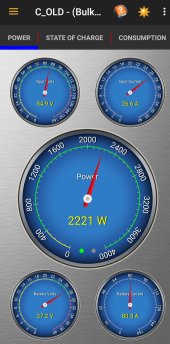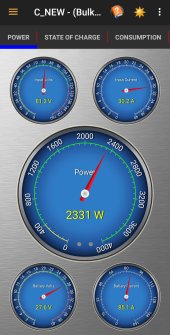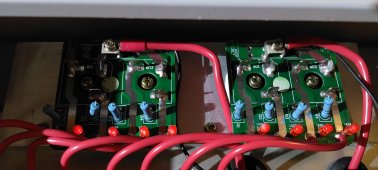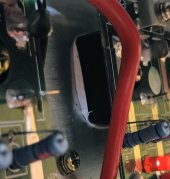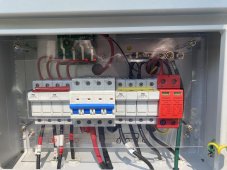MrM1
I'm Here, But I'm Not All There
OK so I just this weekend installed a Watts247 8 in / 2 out combiner
Specs
- 15 amp fuse on each of the 8 input string
- 63 amp quad breaker on each of the 2 output groups
Doing Some Temp Testing of this box now that it is installed
Here is how the panels are connected
The panels connected are in 8 strings of 3 panels each string and go out to 2 midnite solar Classic 150s.
- String voltage is less than 90v dc
- Amps per sting is 8 amps or less
- Tested the output amps going out of each of the 63 amp quad breakers and the amps are 28-30 amps each quad breaker
- Max watts out on either of the 63 amp breakers is 2300 watts at 79 to 84 volts DC
- I have #8 THHN connected to the 63 amp breakers in the combiner going to the 2 Midnite solar classics
So nothing is over loaded according to spec
BUT ...
The temps seem off the chart to me
The breakers at the wire connection screws are 123°F to 150°F.
But at the circuit board above the fuse holders where the 8 red lights are, (at both screws that have the red wire connected to them). Both screw terminals are 202°F on the stand off that is attached to the circuit board and the top of the combiner on the outside is over 150°F just above the circuit boards
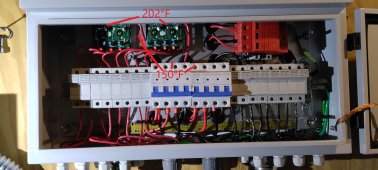
The circuit board itself is also over 150°F.
I have the plastic inside cover off the combiner and the door is open. The location of the combiner is in an attic space. The temp of other metal boxes right next to the Watts 247 8in/2out combiner are 98°F. Also, Solar wire to THHN terminal block connections in that metal box (this goes out to the Combiner) are also at 98°F . So it is not because of attic temps are wire size issues

The temps in the combiner are getting above operation temp for a typical circuit breaker and if this temp transfers to the breaker during the day it would trip the breaker.
So why are the temps so high in the box? Especially at the circuit board? Thoughts? Is this too hot?
Here is the completed install. But I am running the combiner with the door open because of these temps.

Specs
- 15 amp fuse on each of the 8 input string
- 63 amp quad breaker on each of the 2 output groups
Doing Some Temp Testing of this box now that it is installed
Here is how the panels are connected
The panels connected are in 8 strings of 3 panels each string and go out to 2 midnite solar Classic 150s.
- String voltage is less than 90v dc
- Amps per sting is 8 amps or less
- Tested the output amps going out of each of the 63 amp quad breakers and the amps are 28-30 amps each quad breaker
- Max watts out on either of the 63 amp breakers is 2300 watts at 79 to 84 volts DC
- I have #8 THHN connected to the 63 amp breakers in the combiner going to the 2 Midnite solar classics
So nothing is over loaded according to spec
BUT ...
The temps seem off the chart to me
The breakers at the wire connection screws are 123°F to 150°F.
But at the circuit board above the fuse holders where the 8 red lights are, (at both screws that have the red wire connected to them). Both screw terminals are 202°F on the stand off that is attached to the circuit board and the top of the combiner on the outside is over 150°F just above the circuit boards

The circuit board itself is also over 150°F.
I have the plastic inside cover off the combiner and the door is open. The location of the combiner is in an attic space. The temp of other metal boxes right next to the Watts 247 8in/2out combiner are 98°F. Also, Solar wire to THHN terminal block connections in that metal box (this goes out to the Combiner) are also at 98°F . So it is not because of attic temps are wire size issues

The temps in the combiner are getting above operation temp for a typical circuit breaker and if this temp transfers to the breaker during the day it would trip the breaker.
So why are the temps so high in the box? Especially at the circuit board? Thoughts? Is this too hot?
Here is the completed install. But I am running the combiner with the door open because of these temps.




